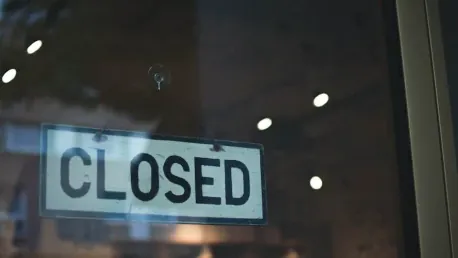Amazon’s decision to shutter its Woodland Hills Go store has sent ripples through the retail landscape, highlighting the ongoing challenges the tech giant faces in balancing its e-commerce dominance with its physical retail efforts. The closure, scheduled for February 26, 2025, is part of a broader portfolio assessment that reflects Amazon’s struggle to maintain its brick-and-mortar presence in an increasingly digital world.
Amazon’s Diverse Approach to Brick-and-Mortar Retail
Shift to Suburban Formats
In its ambitious attempt to revolutionize the retail experience, Amazon Go stores were initially designed to cater primarily to urban shoppers. These stores employed innovative Just Walk Out technology, allowing customers to shop without the need to check out. However, to expand their market reach, Amazon introduced roomier suburban formats like the Woodland Hills store, which featured an extensive selection of grab-and-go food, a made-to-order kitchen, and specialty beverages. This strategy aimed to attract a broader customer base by offering convenience in a more spacious setting.
Despite this innovative approach, the suburban format has not been enough to secure the long-term viability of the Woodland Hills store. An Amazon spokesperson confirmed the closure but attributed it merely to an overall portfolio assessment, without divulging specific reasons for the decision. This closure is not an isolated incident but part of a broader trend for Amazon as it evaluates the sustainability of its physical retail ventures. The Woodland Hills Go store’s shuttering underscores the difficulties Amazon faces in integrating physical stores into its overwhelmingly successful e-commerce framework.
Cost-Cutting Measures and Store Closures
Since early 2023, Amazon has significantly scaled back the number of its Go stores from around 30 to 16, as part of a series of cost-cutting measures. This reduction mirrors a broader struggle within Amazon to find a sustainable physical retail model, reflecting the ongoing tension between expanding its digital services while managing physical store operations. Notably, in April 2023, Amazon simultaneously closed eight Go stores across key urban markets, including Seattle, New York City, and San Francisco.
These closures reveal the difficulties Amazon encounters in balancing costs with the value proposition of its physical stores. While the initial concept of Amazon Go stores attracted significant attention for its innovative checkout-free technology, maintaining these outlets has proved challenging. Despite these setbacks, Amazon remains committed to the Go store concept, viewing physical retail as an essential component of its overall strategy. The closure of the Woodland Hills location will impact ten employees, with Amazon actively seeking relocation opportunities within the company for these individuals, thereby attempting to mitigate the impact on its workforce.
The Future of Amazon’s Physical Retail Strategy
Success with Amazon Fresh and Whole Foods
In contrast to the struggles faced by its Go stores, Amazon’s other physical retail ventures, such as Amazon Fresh and Whole Foods, have demonstrated more promise and stability. Amazon Fresh, the tech giant’s grocery chain, has expanded to over 50 locations, offering a blend of online and physical shopping experiences. These stores leverage Amazon’s extensive logistics network and data analytics to optimize inventory and enhance customer satisfaction. The growth of Amazon Fresh signifies the company’s ability to adapt its retail formats to meet evolving consumer demands.
Similarly, Whole Foods, which Amazon acquired in 2017, has seen steady growth under Amazon’s leadership. By integrating its Prime membership benefits with Whole Foods’ offerings, Amazon has successfully attracted a loyal customer base. This strategic acquisition has allowed Amazon to leverage Whole Foods’ established brand and market presence while introducing technological innovations to enhance the shopping experience. The relative success of Amazon Fresh and Whole Foods highlights Amazon’s potential to succeed in the physical retail space when aligning with customer expectations and leveraging its technological strengths.
Expansion of Just Walk Out Technology
Amazon’s decision to close its Woodland Hills Go store has created significant buzz in the retail industry, bringing attention to the ongoing challenges the tech giant faces in balancing its e-commerce success with physical retail ventures. Scheduled for closure on February 26, 2025, this move is part of Amazon’s broader strategy to reassess its physical store portfolio. Despite its dominance in online retail, Amazon has struggled to establish a strong brick-and-mortar presence. This recent decision underscores the complexities the company faces in navigating the increasingly digital retail environment. While Amazon continues to excel in the e-commerce space, its physical stores have not achieved the same level of success. The closure of the Woodland Hills Go store is a reflection of the broader difficulties Amazon encounters as it attempts to integrate physical stores into its business model. This highlights that even industry leaders like Amazon are not immune to the seismic shifts in the retail landscape driven by changing consumer behaviors and technological advancements.









